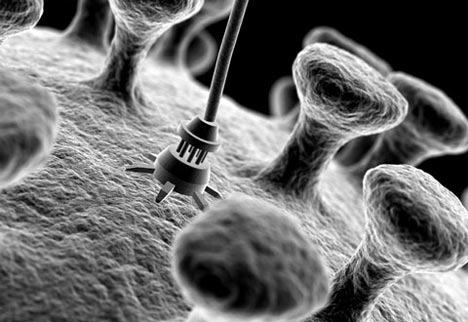U.S. manufacturer ships nanotechnology equipped solar cells


The race for better solar efficiency has gone microscopic. Advanced nanotechnology has cut years off of investment payback time though higher energy absorption, says a U.S. PV maker.
ecoSolargy announced a new solar module line last week, which incorporates nanotechnology to keep panels cleaner by filling tiny holes that typically would accumulate dirt, dust, or water. This application of nanotechnology increases efficiency by 35 percent over a 20-year period, the company says.
"The self-cleaning element eliminates the need for periodical maintenance and ensures the panels are always performing at maximum efficiency, leading to cost savings equivalent to a 3-5 year decrease in payback time," said a spokesperson. This advance improves solar energy absorption by up to six percent, she added.
Nanotechnology has earned ecoSolargy's 300w modules the second highest PTC (PVUSA Test Condition) rating out of all 300w mono crystalline PV modules in the market, the company says. One of the 250W modules, when combined with a M215 micro inverter, also results in a very high efficiency rating.
ecoSolarity has commercialized technology that researchers throughout the world are still exploring in labs, but nanotechnology's potential hasn't been reached yet.
Researchers at Northwestern University have created a molecular dye to absorb sunlight and convert it into electricity, mimicking chlorophyll in plants. The project promises lower cost, high efficiency solar cells called a "Graetzel cell."
Other examples include New Energy Technologies, a start-up in Maryland that has invented a way to coat glass conventional glass windows with see-through film that generates renewable energy. NASA is researching "quantum dots" - ultra small semiconductors that dramatically increase solar efficiency.
The nanotechnology is so new that government regulators are still grasping how to establish safe manufacturing and disposal rules.
(Image credit: localcooling.com)
Related on SmartPlanet:
- A double-duty solar window
- A new window dressing for solar power
- Researchers invent see-through solar film
- The morning briefing: nanotechnology
- See-through window created invents invisible wires
This post was originally published on Smartplanet.com